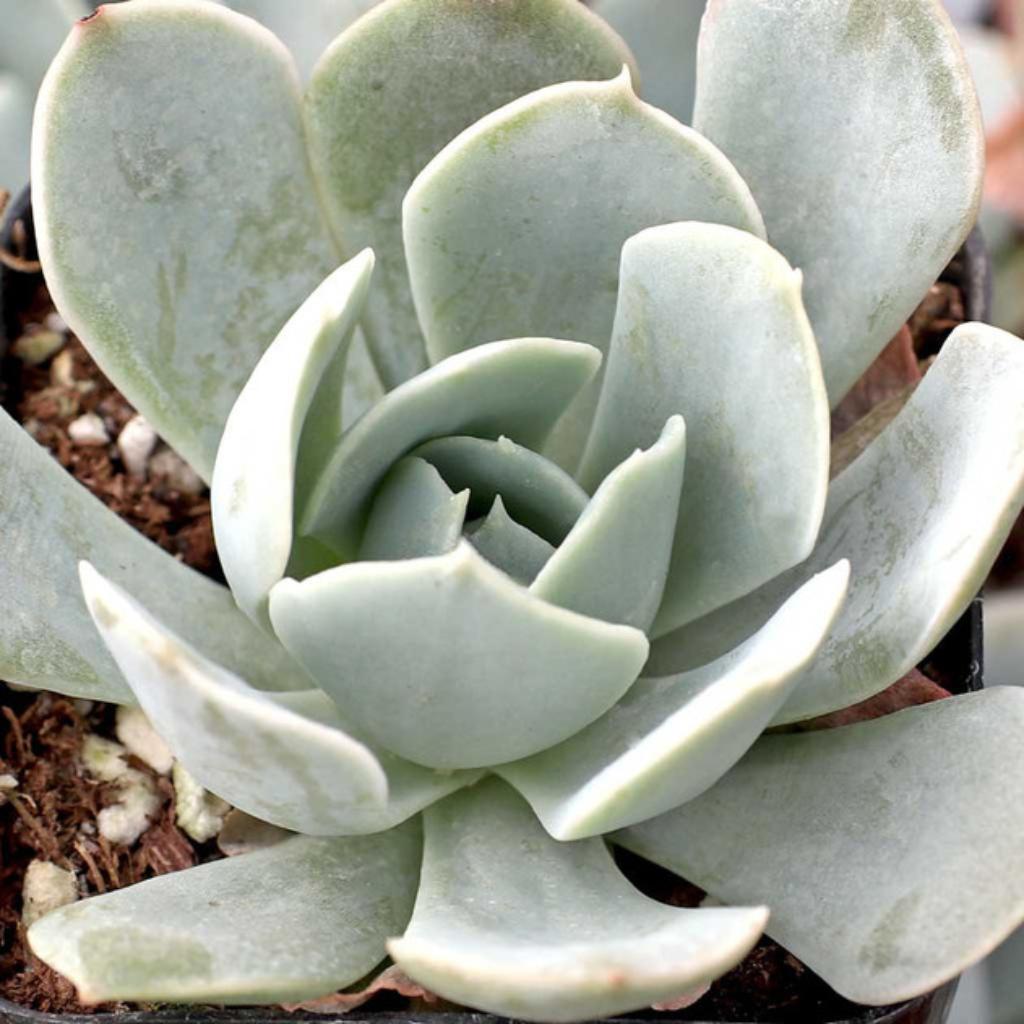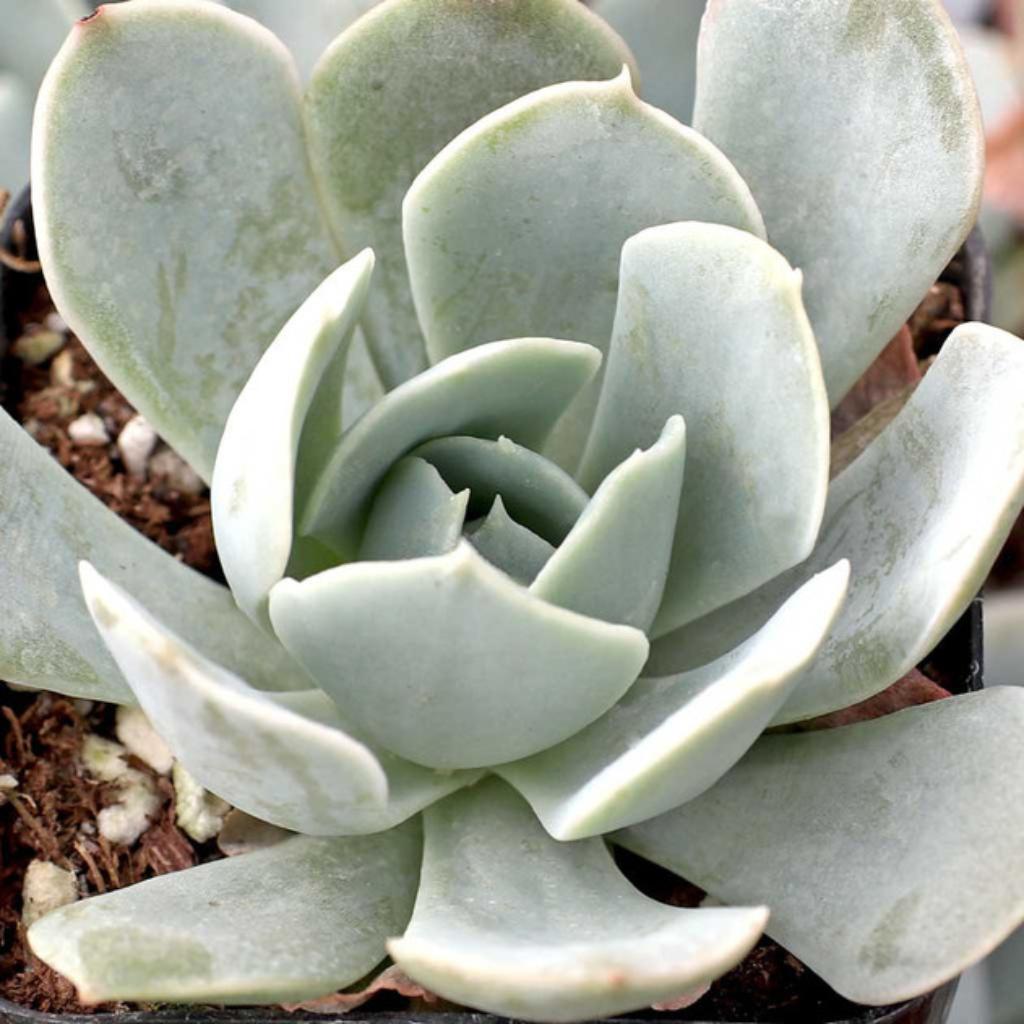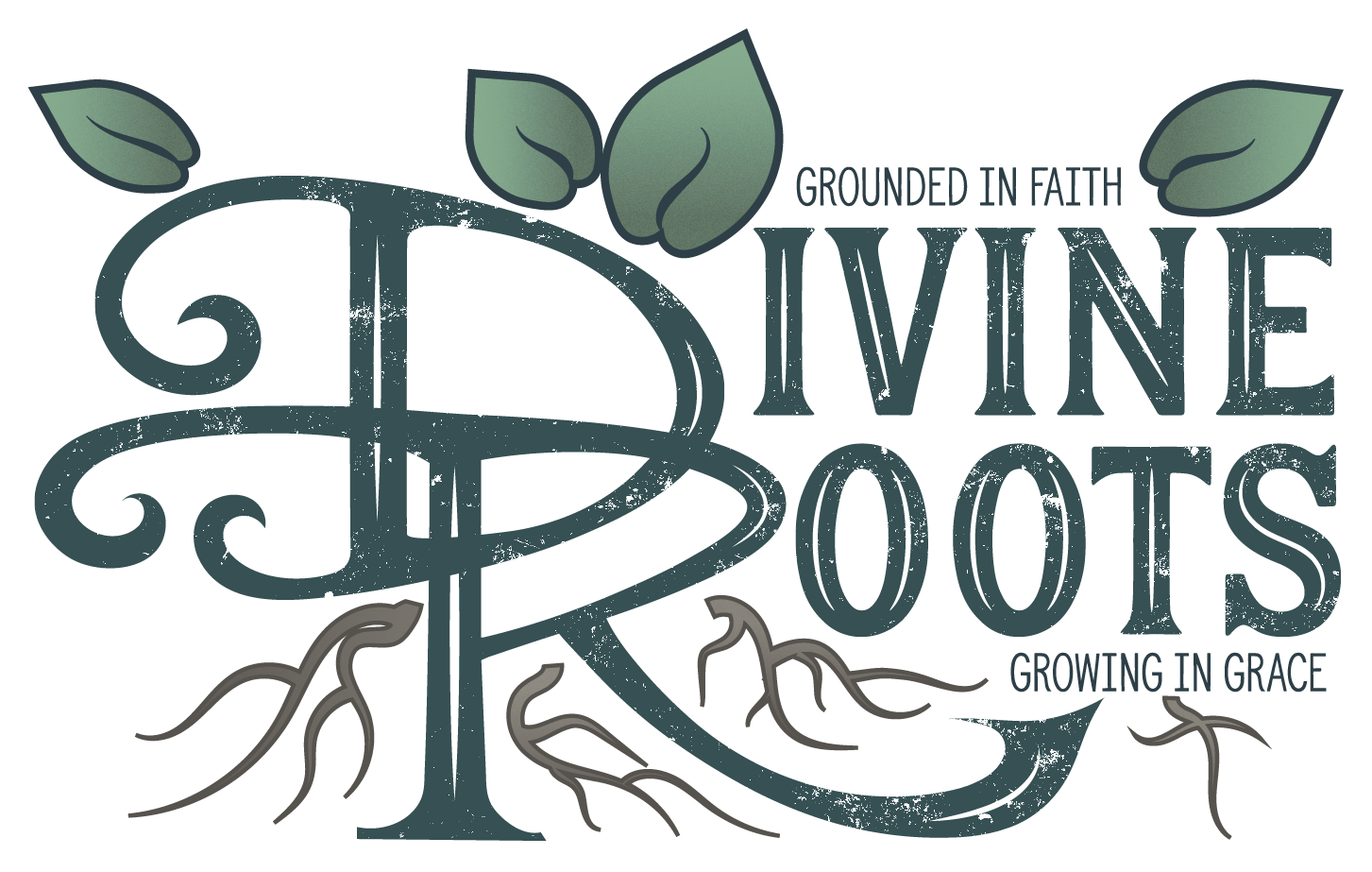
Echeveria Runyonii Pink Edge
$12.79
Unit price perEstimated delivery between 13 October and 15 October.
At Divine Root, we are committed to delivering healthy, high-quality indoor plants to our customers. While we do not accept returns due to the perishable nature of live plants, we offer a 30-day plant health guarantee and store credit for qualifying issues. Please read our Refund Policy carefully to understand how we handle concerns regarding plant health, shipping, and order

Echeveria Runyonii Care Guide & Presentation
Pet Safe
Yes
Water Needs
Low
Sunlight
Bright
Hardiness Zones
9-11
Temperature
60°F to 80°F
Suitable Space
Windowsills, sunny shelves, tabletop decor
Humidity
Low
Plant Class
Echeveria
Plant Type
Succulent
Plant Characteristics
Rosette-forming, pink-edged
Genus
Echeveria
Fertilizing
Once per season
Re-potting
2-3 Years
Cleaning
Soft Brush
Propagation
Offsets
Echeveria Runyonii Pink Edge: Overview
The Echeveria Runyonii Pink Edge is a striking succulent prized for its unique, spoon-shaped leaves with delicate pink margins. A cultivar of Echeveria runyonii, this rosette-forming succulent features powdery blue-green foliage that curls upward at the edges, creating a whimsical, ruffled appearance. Under bright light or mild stress, the leaf margins blush soft pink, adding a pop of color to its sculptural form. Native to Mexico's arid regions, this Crassulaceae family member grows 6-8 inches wide and produces tall, arching stalks of coral-orange flowers in late summer or fall.
Ideal for containers, rock gardens, or indoor displays, this drought-tolerant plant is low-maintenance and fast-growing. Unlike the classic Echeveria runyonii Topsy Turvy (which lacks pink edges), the Pink Edge variety offers a subtle yet captivating twist with its pastel accents.
Echeveria Runyonii Pink Edge: Benefits
- Aesthetic appeal: Ruffled pink-edged leaves add texture and color to modern, desert-themed, or cottage-style decor.
- Drought-tolerant: Thrives with minimal watering, perfect for xeriscaping or busy plant owners.
- Air-purifying: Filters indoor air by absorbing CO2 and releasing oxygen at night.
- Non-toxic: Safe for homes with pets and children.
- Compact growth: Fits small spaces like windowsills, terrariums, or mixed succulent arrangements.
Echeveria Runyonii Pink Edge Care Guide
Light and Water
- Light: Prefers full sun to bright indirect light (6+ hours daily). Direct sun enhances pink margins; acclimate gradually to prevent burns.
- Water: Water deeply but infrequently every 3-4 weeks in summer. Let the soil dry completely between waterings. Reduce to monthly in winter.
Soil and Fertilizing
- Soil: Use a gritty, well-draining cactus/succulent mix (e.g., 50% potting soil + 50% perlite/pumice).
- Fertilizer: Feed lightly with a diluted succulent fertilizer (5-10-5) once in spring and summer.
Temperature and Humidity
- Temperature: Ideal range: 60-80°F (15-27°C). Tolerates brief frost down to 25°F (-4°C) if dry.
- Humidity: Thrives in dry air (10-30% humidity). Avoid high humidity to prevent rot.
Pruning, Propagating, and Repotting
- Pruning: Remove dead lower leaves to maintain symmetry. Trim spent flower stalks post-bloom.
- Propagating: Propagate via offsets, leaf cuttings, or stem cuttings. Let cuttings callous for 2-3 days before planting.
- Repotting: Repot every 2-3 years in spring. Use a shallow, wide pot to accommodate spreading rosettes.
Common Problems
- Root rot: Caused by overwatering. Ensure pots have drainage holes and the soil dries fully.
- Etiolation (stretching): Insufficient light leads to loose rosettes. Move to a sunnier spot.
- Mealybugs or aphids: Treat with neem oil or isopropyl alcohol.
- Faded pink edges: Insufficient light. Gradually increase sun exposure.
Echeveria Runyonii Pink Edge: Best Locations & Uses
- Sunny windowsills: Enhance pink margins with morning sunlight.
- Rock gardens or gravel beds: Contrast beautifully with green or red succulents.
- Hanging planters: Showcase cascading rosettes in patios or balconies.
- Office desks: Thrives under bright artificial light with minimal care.
- Pet-friendly spaces: Safe for households with cats or dogs.


